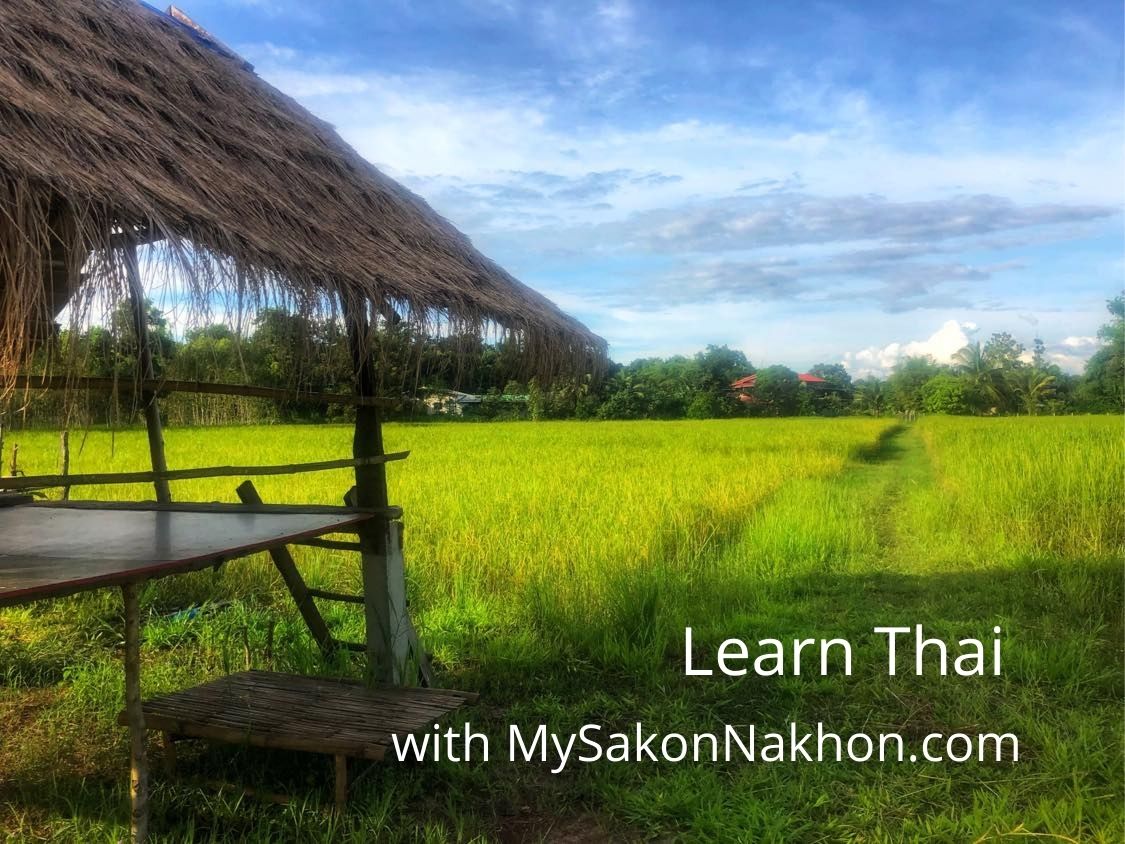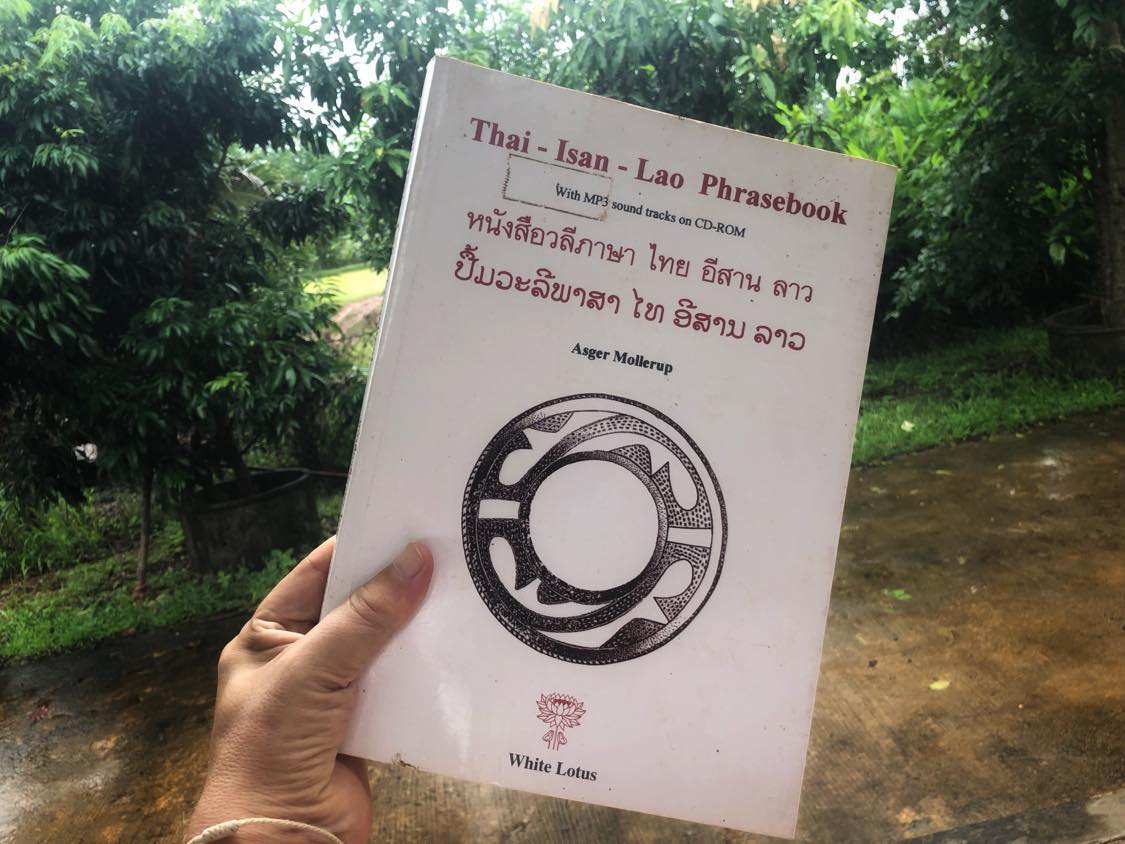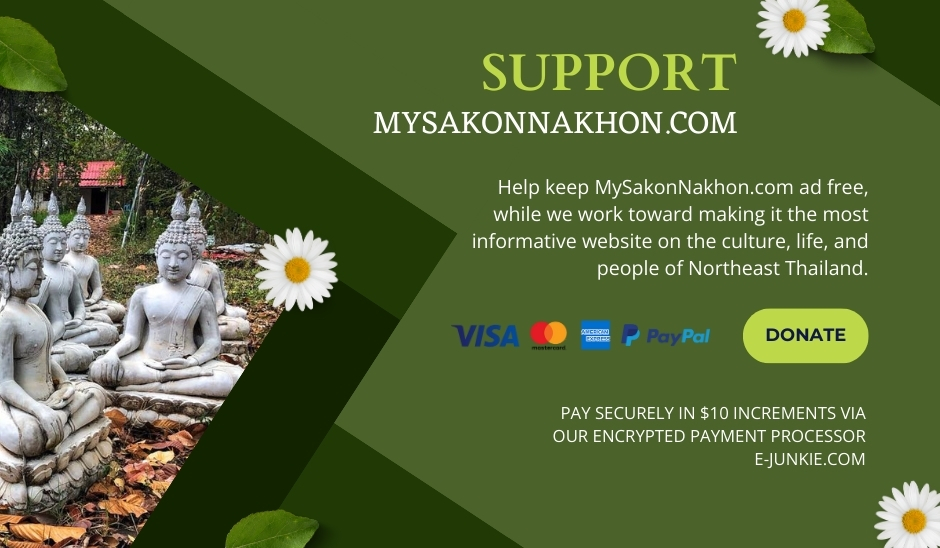
Learn How to Speak the Isaan Language Quickly

The Northeast of Thailand is called Isaan. It also is spelled Isan, Esan, or Esarn, as there is no single accepted way to transcribe Thai words into English. The official language of Isaan is Thai. However, the language commonly spoken among friends and family members is the Thai dialect also known as Isaan. This dialect borrows heavily from the Lao language, as Northeast Thailand was settled long ago by primarily Lao immigrants (learn more in our Sakon Nakhon history).
You can easily spend time in Sakon Nakhon and Northeast Thailand without learning any Isaan words or phrases. Everyone who lives here speaks the Thai language fluently, as it is the language taught in schools and the one used to conduct all official business. However, if you would like to impress Northeastern Thais by speaking a bit of Isaan, here are a few tips for learning quickly some key elements of the language — things that will better help you better understand the Isaan people when they talk to you in regular Thai or the Isaan dialect, which are increasingly mingled together by each new generation.
How Isaan People Speak Thai
Many people in Northeastern Thailand can speak perfect Thai when the situation calls for it. However, when they are talking among friends and family, they often will pronounce Thai words as if they were Isaan words. This means that some consonant sounds will change. You can speak more like an Isaan person by changing how you pronounce certain Thai words. Here are a few differences and the changes you can make.
1. There is no “r” sound in the Isaan language. If you are speaking a Thai word that begins with an “r” sound, such as the word for hotel: rong raem (โรงแรม), you may change it to an “l” sound: long laem. However, occasionally the “r” will be pronounced like an “h”. For example, the Thai word for hot, ráwn (ร้อน), is spoken as háwn (ฮ้อน) — a very commonly heard word and one to put in your Isaan language bank!
2. There are no consonant clusters in Isaan. The “ch” sound in Thai becomes an “s” sound. Thus a Thai word like chà-cherng-sao (ฉะเชิงเทรา), the name of a province near Bangkok, is pronounced as sà-serng-sao. In other consonant clusters, such as “gl” and “pl,” the second letter is dropped. Thus the Thai word for “far,” glai (ไกล), becomes gai; and the Thai word for “fish,” plah (ปลา), becomes pah.
There are of course, many other differences, but these are often subtle. The changes above are the ones you’ll most likely pick up when listening to Isaan people speak and which you can incorporate when trying to speak the Isaan language yourself.

How to Say Yes & No in Isaan
The Thai words for “yes” (châi – ใช่) and “no/not” (mai – ไม่) are ones you undoubtedly know already if you have been learning Thai. The Isaan equivalents are easy to learn, and words that you’ll hear spoken everywhere.
The Isaan word for “yes” is maen (แมน). The word for “no” or “not” is bàw (บ่). In Thai the no/yes words are often joined together (mai-châi) when giving a negative response to a question. The same applies for Isaan, where the negative reply is bàw-maen. You also will hear the word bàw spoken in the phrase “Bàw bpen-yăng” (บ่เป็นหยัง), which means “Don’t worry about it,” and is the equivalent of the Thai phrase “Mai pen rai” (ไม่เป็นไร).
Asking Questions in Isaan
In Thai, you can form questions by adding the word măi (ไหม) to the end of a word or statement, such as when asking the question, “Do you understand?” Khâo-jai măi (เข้าใจไหม). The question word placed at the end sounds identical to the Thai word for “no,” but with a rising tone instead of a falling tone.
In the Isaan language you do the same thing. However, you add the exact same word for “no” (bàw – บ่) at the end. There is no tonal difference. Therefore, to ask, “Do you understand?” in Isaan, you will say: Khâo-jai bàw (เข้าใจยู่บ่).
Likewise, if you want to ask, “How are you?” in Isaan, you change the Thai phrase from “Sa-bai dee măi” (ชำบายดีไหม) to “Sa-bai dee bàw” (ชำบายดีบ่), and the common Thai question “Gin khâo rĕu yang” (Have you eaten yet?) becomes Gin khâo lâ bàw (กินข้าวล่ะบ่).
The other Isaan question type that you’ll often hear spoken (and is easy to learn yourself) is “where” questions. Here we take the Thai word “năi” (ไหน) and change it to “săi” (ไส). Thus the commonly heard Thai question “Pai năi” (Where are your going?) becomes “Pai săi”. Or if you want to know where something is, like a restaurant, the question changes to “Láan aa-hăan yòo săi” (ร้านอาหารยู่ไส).
How to Show Appreciation in Isaan
When showing enthusiastic appreciation of in Thailand, we often add the word mâak (มาก) or mâak mâak to the end of a statement, which means “very much” or “a lot”. For example, “Thank you very much” is Khàwp khun mâak mâak (ขอบคุณมากๆ) in Thai.
In the Isaan language, mâak mâak is changed to lăai-lăai (หลายๆ) and the word dêr (เด้อ) is added afterward. Thus in Isaan “Thank you so much!” is expressed as Khàwp khun lăai-lăai dêr (ขอบคุณหลายๆเด้). Or if you want to compliment someone on a delicious Isaan meal, you can say, “Sâeb lăai-lăai dêr” (แซ่บหลายๆเด้) — the word sâeb (แซ่บ) meaning “delicious” in Isaan.
- The Hidden Dharma of Thai Language & Culture - May 11, 2024
- The Royal Ploughing Ceremony in Thailand – A History - May 8, 2024
- Dying Well the Buddhist Way in Thailand - May 7, 2024




